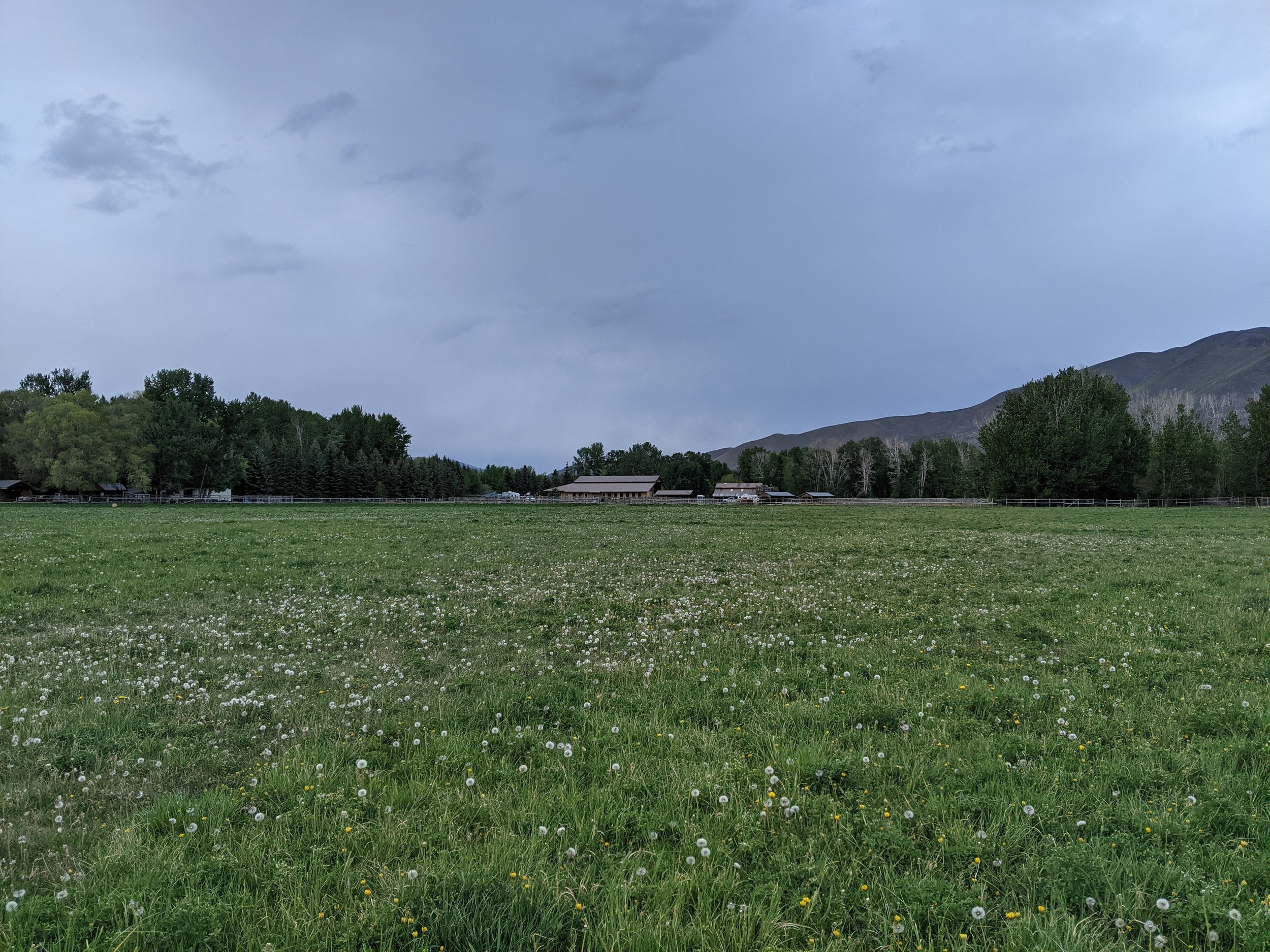
Frequently Asked Questions
What is regenerative agriculture?
Regenerative agriculture is a holistic approach to land stewardship that aims to make the land healthier, more productive, and more biodiverse over time. When implemented thoughtfully, it can help mitigate climate change and protect water resources. Commonly cited practices include improving soil health by minimizing disturbance (i.e. minimizing or eliminating tillage and application of chemicals), maintaining living roots and soil armor at all times (crops, cover crops, leaving crop residue, etc.), including livestock where possible, and more. It also takes people into account, prioritizing farmer and community well-being. At Drinkers of the Wind, we never spray chemicals for any reason. Our hay field is no-till, and has been for decades. When establishing the orchards and installing our berm and swale system in 2022, we disturbed the soil, but not since. We use cover crops extensively and our garden beds received a shallow 2-3” till to establish them and we’ll generally not re-till them in future years. We use piles of compost from our on-farm resources - horse manure and old hay (we are a horse ranch, after all), garden waste, plus wood chips from deadfall in our cottonwood forest (we work with the Forest Service on forest health and fire safety since we’re directly across the river from Bellevue).
Is regenerative the same as organic?
No, a regenerative farm might be organic (certified or not), but not necessarily - consumers need to double check! And not all organic farms can be considered regenerative, depending on their practices. Buying from smaller, local farms and knowing your farmer are the best ways to ensure your purchases are regenerative - for you, the land, and your community!
What is agroforestry and what are its benefits?
Agroforestry is the intentional integration of trees and woody shrubs into an agricultural system. Types of agroforestry include alley cropping (rows of trees/shrubs with other crops planted in the alleys), forest farming (growing crops in the forest canopy), silvopasture (grazing livestock on pasture under tree crops), riparian buffers (using trees/shrubs to protect waterways from runoff and other agricultural impacts), and windbreaks (trees/shrubs providing protection from wind, snow, dust, etc, to neighboring crops, animals, & buildings while providing wildlife habitat, biodiversity, and other benefits). Agroforestry has been demonstrated to protect soil, animals, crops, and homes from extreme weather. It improves water quality and some practices have even been shown to also increase water quantity over time. It improves habitat for pollinators, birds, and other wildlife. And, perhaps most importantly, trees and shrubs sequester carbon in much higher quantities than other crops and for much longer, helping mitigate climate change while simultaneously increasing our resilience to its effects.
At Drinkers of the Wind, we currently have alley cropped orchards, riparian buffers, and windbreaks, with plans for forest farming and potentially silvopasture (at the point at which we have the bandwidth to add livestock). We’ve planted more than 3,000 trees and woody shrubs in the last two years, with more on the way!
What’s with the weird produce packaging?
We’re doing our best to reduce the use of plastics on the farm, and eliminate single use plastic. It’s challenging to find good packaging materials for produce that are not petroleum based and are truly compostable. We’re experimenting with the options and welcome your feedback. Bring our packaging back to us at the farmer’s market and we’ll deal with the composting!
Why is there controversy around the term “regenerative”?
Because certification isn’t regulated by the government, anyone can slap the label on their products, whether they are truly regenerative or not. This is not a new problem - “greenwashing” has been occurring since the beginning of the environmental movement. There is a problem when major corporations use the word for products that do not meet its common sense definition. However, corporate mis-use of the term does not invalidate its true meaning and the sincere implementation of its principles. And we hope that the government doesn’t start regulating “regenerative” like it does “organic,” since we’re no longer allowed to use the O word, no matter how much our practices are in line with its meaning and intent. It would be sad to also lose “regenerative.” In the meantime, we will proudly continue to use the word and hope to know our customers and answer their questions directly - that’s the benefit of knowing your farmer, buying locally, and supporting small farms.
I’m interested in learning more - can we visit your farm?
Because we live and work on the farm, we ask you not to just drop by unannounced. However, we are happy to arrange tours for interested folks. Visit the contact page on our website and let us know you’d like a tour and we’ll be in touch. If there’s enough demand, we may start offering regular tour dates - sign up for our emails and/or follow us on Facebook or Instagram to stay in the loop!
What other questions do you have? Drop us a line and let us know what else we should answer!
